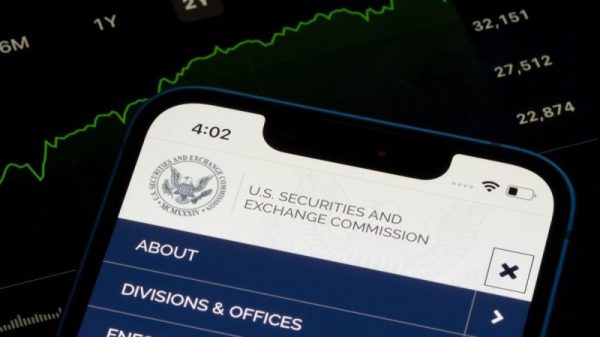Leverage in Trading: Key Benefits, Risks, and How It Works
Leverage trading is one of the trading strategies that is more likely to provide a higher return for experienced investors. It is a high-risk, high-reward trading tool that investors use to increase their returns. It lets them take a position they wouldn’t normally get and poses a higher risk.
In finance, the term “leverage” signifies the common practice of borrowing money and then investing it into something. The money borrowed is in the form of a loan. Nowadays, debt is something that many of us avoid in our daily routines, but some investors introduce leverage as an effective means of increasing their returns on investment.
With leverage trading, an investor can take a trading position that is worth more money than the investment alone.
How Does Leverage Function?
An investor’s total exposure dictates the potential for gains and losses. Exposure refers to the level of risk an investor takes on, meaning the amount of money they might either earn or lose through an investment.
Leverage trading allows investors to make trades with more exposure than what they originally invested.
That is the potential benefit—in the case of a successful trade, it can be more than the amount of funds they have invested. This kind of trading is generally expressed as x2, x5, or x10, indicating that the investor’s exposure is twice, five times, or ten times the size of the originally invested amount. By increasing one’s exposure, the reward could be multiplied, but if the investment goes down, the losses are also multiplied.
For example, let’s assume that you are willing to spend $100 for each unit of an asset, which is equal to a total of 10 units. In regular trading, you would need $1,000 to purchase all 10 units of the exposure. With x2 leverage, you need only invest $500 to receive the full $1,000 in exposure.
What are the Benefits of Leverage Trading?
Leverage trading, while inherently risky, can be a powerful tool for seasoned investors to significantly boost returns. It’s akin to turning up the volume on potential profits, allowing traders to amplify the results of their investments.
But the benefits don’t stop there. Leveraged trading offers several additional advantages:
Enhanced short-selling capabilities: This enables traders to implement hedge-based strategies, helping to protect investments and manage risk more effectively.
Access to a wider range of assets: Leverage opens doors to high-value or exclusive options that might otherwise be out of reach for individual investors.
Amplified profit potential: With proper management, leverage can dramatically increase returns on successful trades.
While leverage trading isn’t suitable for everyone due to its associated risks, it presents compelling opportunities for those who understand and can navigate its complexities. For experienced investors, the potential benefits of leverage trading can far outweigh the risks when used judiciously.
What are the Risks of Leverage Trading?
Leverage trading is a high-risk strategy that can result in losses just as significant as the potential gains. The stakes are high—your losses can quickly escalate if the market moves against you. That’s why leverage trading isn’t for everyone; it requires a deep understanding of how it works. You need to be highly experienced, as this is not a set-it-and-forget-it type of investment. It demands time, attention, and active management.
Moreover, leverage trading often comes with additional costs, such as contract fees and margin requirements, which can further eat into your profits or increase your losses. So, while the rewards can be enticing, the risks are substantial, and only those well-prepared should venture into this territory.
What is Leverage in Forex Trading?
Leverage is the process of borrowing a specific amount of money, which is necessary for investing in something. In the case of forex, money is mostly borrowed from brokers. In the forex market, money does not typically come from the trader but rather from the broker who loans it. This concept is known as leveraging because the trader can use other people’s money for trading purposes.
It’s important to understand that margin-based leverage is a double-edged sword and doesn’t always correlate with risk. In situations where traders are required to provide 1% or 2% of the transaction value as a margin, they may not face increased risk of gains or losses. This is because the investor can still qualify for a higher margin than what is required for any given position.
Leverage in forex trading is usually as high as 100:1 in the currency market. Thus, one can trade up to $100,000 in value for only $1,000 in their account. Most forex market makers believe that forex market expectations are such that high leverage is offered because it is also a matter of risk.
What is Leverage in Crypto Trading?
Leverage in crypto trading involves using borrowed capital to execute trades, allowing you to operate on a larger scale and amplify your buying or selling power. Essentially, you can use a small amount of your own capital as collateral to leverage much larger trades.
While leveraging can potentially boost your profits, it also carries significant risks—especially in the highly volatile crypto market. It’s important to be cautious when using leverage in crypto trading, as the market can move against you, leading to substantial losses.
Unlike traditional equity trading, where you buy or sell shares, leverage in crypto involves using borrowed funds to invest in digital assets. Your profit or loss directly depends on this leveraged activity, making it a powerful but risky tool for trading.
Why Use Leverage to Trade Crypto?
As mentioned, traders use leverage to take larger positions, potentially accelerating profits. However, it’s important to remember that leverage can also amplify losses, especially in futures or derivatives trading.
Traders utilize leverage to enhance the liquidity of their capital. For instance, rather than maintaining a 2x leveraged position on a single exchange, they might choose 4x leverage to attain the same position size while requiring less collateral.
Therefore, they could employ the remaining portion of their money in other places, like trading other assets, staking, providing liquidity to decentralised exchanges (DEX), and investing in NFTs.
Leverage trading possesses numerous risks, including increased volatility, platform outages, and legal ambiguities, which underscore the great value of informed decision-making, thorough research, and disciplined trading practices.
5 Trade Markets Using Leverage:
Shares
Forex
Indices
Commodities
ETFs
What is the Leverage Ratio in Trading?
Commonly, a leverage ratio or debt ratio mainly deals with and measures the amount of debt a corporation or business is taking on. This ratio relates to the amount of debt a company has relative to its total assets or equity. These figures are provided in the company’s income statement or balance sheet. This ratio helps shareholders like us to know the state of a company’s financial structure.
A leverage ratio explains how much of your margin is at risk, not only in terms of money but also in terms of your trade exposure. Your margin will determine the leverage ratio you have.
The market conditions where you plan to trade, the amount you buy, and who you are trading with can alter the leverage ratio. Also, because the market exposes leverage, if your position is very small, the risk will be small as well.
If you observe how a 10% margin could give the same amount of exposure as a $1,000 investment with just a $100 margin, then you have the advantage of leverage at 10:1.
There can be circumstances where the operating ratio reveals how a company manages its financial obligations to obtain higher returns, while combined ratios propagate the operating and financial ratios together.
In conclusion, understanding leverage is crucial for crypto and forex trading. It’s a powerful tool that amplifies both profits and risks, demanding careful management and solid risk strategies. By mastering leverage, traders can better navigate these volatile markets.
May this knowledge serve you well in your trading journey. Here’s to informed decisions and successful trades!
The post Leverage in Trading: Understanding Its Impact and Risks appeared first on FinanceBrokerage.
































